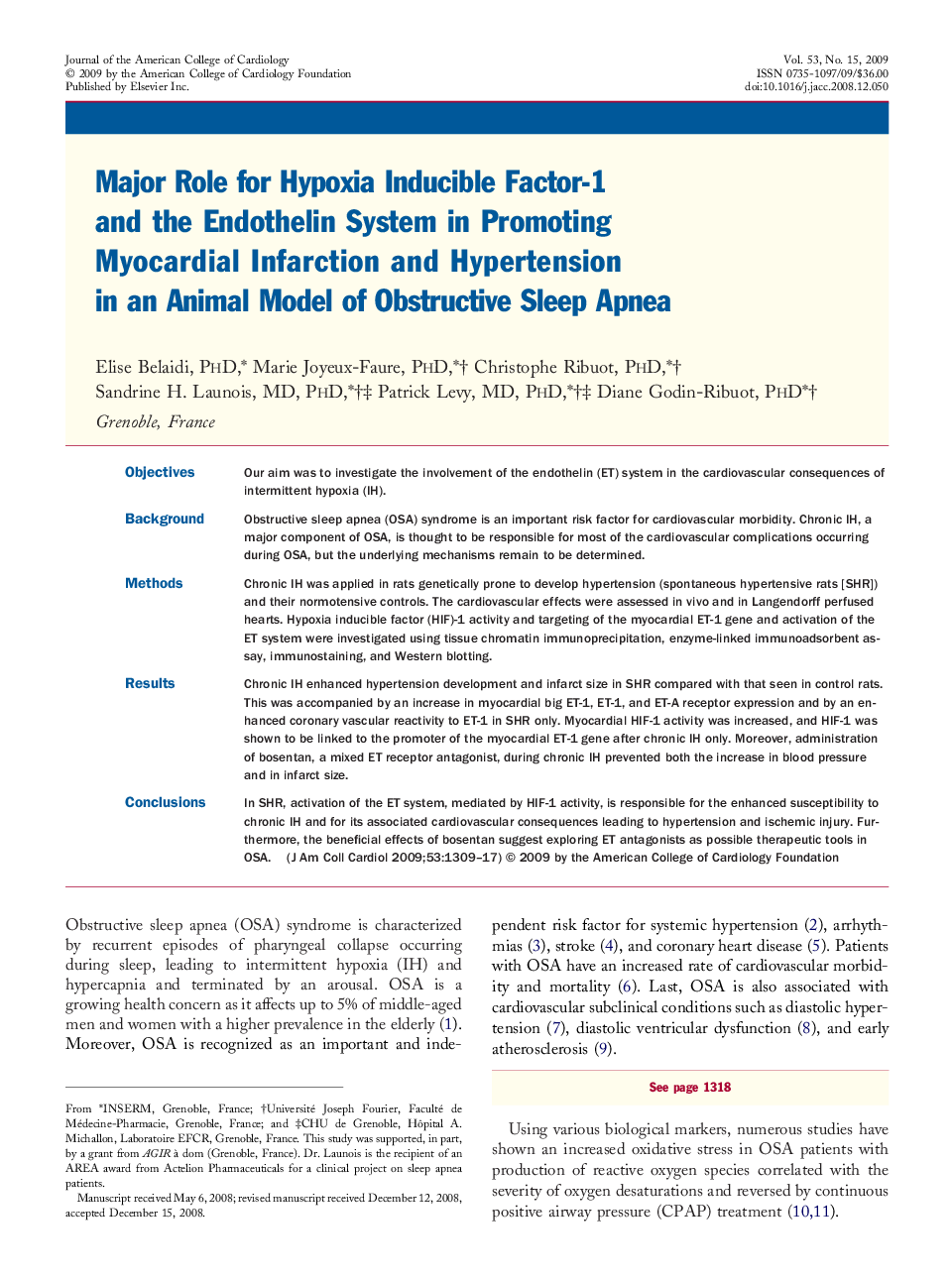| Article ID | Journal | Published Year | Pages | File Type |
|---|---|---|---|---|
| 2952613 | Journal of the American College of Cardiology | 2009 | 9 Pages |
ObjectivesOur aim was to investigate the involvement of the endothelin (ET) system in the cardiovascular consequences of intermittent hypoxia (IH).BackgroundObstructive sleep apnea (OSA) syndrome is an important risk factor for cardiovascular morbidity. Chronic IH, a major component of OSA, is thought to be responsible for most of the cardiovascular complications occurring during OSA, but the underlying mechanisms remain to be determined.MethodsChronic IH was applied in rats genetically prone to develop hypertension (spontaneous hypertensive rats [SHR]) and their normotensive controls. The cardiovascular effects were assessed in vivo and in Langendorff perfused hearts. Hypoxia inducible factor (HIF)-1 activity and targeting of the myocardial ET-1 gene and activation of the ET system were investigated using tissue chromatin immunoprecipitation, enzyme-linked immunoadsorbent assay, immunostaining, and Western blotting.ResultsChronic IH enhanced hypertension development and infarct size in SHR compared with that seen in control rats. This was accompanied by an increase in myocardial big ET-1, ET-1, and ET-A receptor expression and by an enhanced coronary vascular reactivity to ET-1 in SHR only. Myocardial HIF-1 activity was increased, and HIF-1 was shown to be linked to the promoter of the myocardial ET-1 gene after chronic IH only. Moreover, administration of bosentan, a mixed ET receptor antagonist, during chronic IH prevented both the increase in blood pressure and in infarct size.ConclusionsIn SHR, activation of the ET system, mediated by HIF-1 activity, is responsible for the enhanced susceptibility to chronic IH and for its associated cardiovascular consequences leading to hypertension and ischemic injury. Furthermore, the beneficial effects of bosentan suggest exploring ET antagonists as possible therapeutic tools in OSA.
